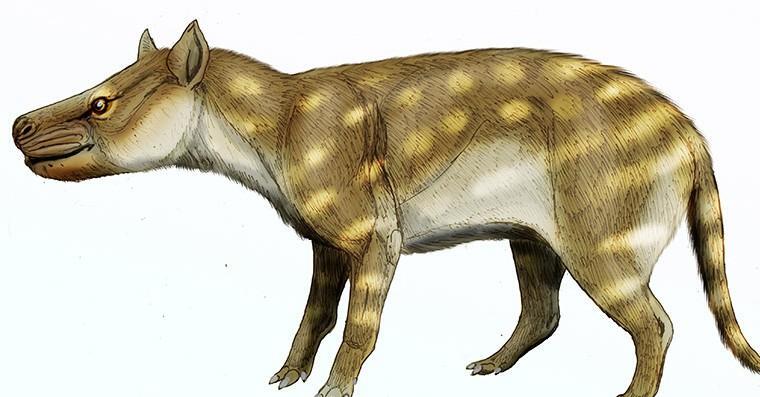
How Climate Change Turned a Meat-Eater into a Bone-Cruncher?
Climate change is a pressing concern for our planet today. The effects of global warming are far-reaching, from rising sea levels to extreme weather events, and it’s no surprise that scientists are searching for answers on how to mitigate its impact. Recent research has shed light on an ancient predator that adapted to a climate crisis thousands of years ago, and the lessons it offers for surviving climate change today.
Meet Dissacus praenuntius, a meat-eating predator that lived around 56 million years ago during the Palaeocene-Eocene Thermal Maximum (PETM). This period was marked by a significant increase in global temperatures, leading to a drastic change in the environment. Rutgers University scientists have analyzed fossilized teeth of Dissacus praenuntius and discovered that the animal evolved to consume bones in response to the scarcity of meat during this time. This is a remarkable example of how an ancient species adapted to a changing environment, and it offers valuable insights for us today.
The PETM was a time of significant climate change, with temperatures rising by as much as 5°C (9°F) above pre-industrial levels. This would be equivalent to the current global temperature rise of around 1°C (1.8°F) over the past century. The effects of this climate change were far-reaching, with many species facing extinction and ecosystems collapsing. It’s against this backdrop that Dissacus praenuntius evolved to consume bones, a dietary shift that would have been crucial for its survival.
So, what did Dissacus praenuntius look like? Fossil records suggest that it was a small, carnivorous mammal, likely around the size of a modern-day opossum. Its teeth were specially adapted for meat-eating, with sharp, pointed cusps and a distinctive structure that allowed it to pierce and tear flesh. However, as the climate changed and meat became scarce, Dissacus praenuntius had to adapt or perish.
The researchers at Rutgers University used advanced techniques to analyze the fossilized teeth of Dissacus praenuntius. By studying the wear patterns on the teeth, they were able to reconstruct the animal’s diet and determine that it had shifted from a meat-based diet to one that included bones. This is a significant discovery, as it provides evidence of a major dietary shift in response to environmental pressures.
But why did Dissacus praenuntius start eating bones? According to the researchers, the animal was likely forced to adapt to a new food source due to the scarcity of meat during the PETM. With meat becoming a rare commodity, Dissacus praenuntius had to find alternative sources of nutrition to survive. Bones would have provided a rich source of calcium and other essential minerals, allowing the animal to continue thriving in a challenging environment.
The implications of this discovery are far-reaching. As the world faces its own climate crisis, the story of Dissacus praenuntius serves as a powerful reminder of the importance of adaptability and resilience in the face of environmental change. The fact that an ancient predator was able to adapt to a changing environment by shifting its diet offers valuable lessons for us today.
“What happened during the PETM mirrors what’s happening today,” said Dr. [Name], a researcher at Rutgers University. “We’re seeing a similar pattern of climate change today, with rising temperatures and changes to ecosystems. The story of Dissacus praenuntius offers a powerful reminder of the importance of adapting to our changing environment.”
So, what can we learn from the story of Dissacus praenuntius? Firstly, it’s clear that climate change is a global phenomenon that requires a global response. The story of Dissacus praenuntius serves as a reminder that even the smallest changes to our environment can have significant impacts on ecosystems and the species that inhabit them.
Secondly, the discovery of Dissacus praenuntius’ dietary shift highlights the importance of adaptability and resilience in the face of environmental change. As the world faces its own climate crisis, it’s essential that we prioritize the development of sustainable technologies and practices that allow us to adapt to a changing environment.
Finally, the story of Dissacus praenuntius offers a powerful reminder of the importance of conservation and preservation. As we face the challenges of climate change, it’s essential that we prioritize the protection of ecosystems and the species that inhabit them. By learning from the past, we can work towards a more sustainable future for all.
Source:
https://www.rutgers.edu/news/ancient-predators-shift-diet-offers-clues-surviving-climate-change






